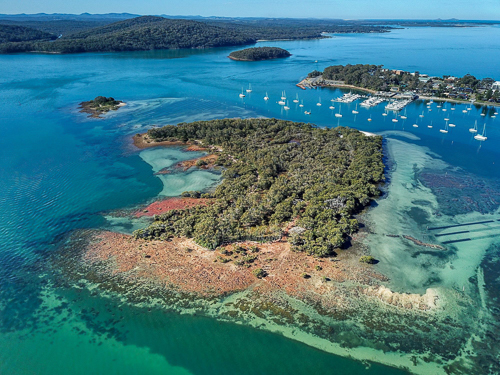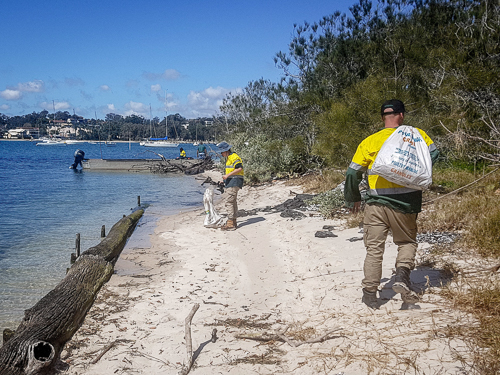Volunteers remove tonnes of waste from Dowadee Island

Traditional owners, local stakeholders and the NSW Department of Primary Industries (DPI) have joined forces to clean-up and protect the Aboriginal cultural values of Dowadee Island near Port Stephens.
More than nine tonnes of rubbish was removed in an operation aimed at working with local Worimi people to protect and enhance their connection to the Sea Country, and to foster collaboration between local organisations.
“Dowadee Island holds deep cultural significance for the Worimi people who live along the coast,” said DPI Aboriginal Liaison Officer, Regan Lilley.
“For thousands of years, Aboriginal people have relied on the natural resources provided by Sea Country, making it central to cultural practices and activities.
“Part of the NSW Government’s Marine Estate Management Strategy 2018-2028 is a commitment to work side-by-side with Aboriginal communities in the management of Sea Country to reduce threats and risks to Aboriginal cultural heritage.”
Stakeholders who contributed to the operation included the Worimi Local Aboriginal Land Council, local oyster farmers, the Royal Australian Air Force, Worimi Green Team, Port Stephens Council, Hunter Bird Observers Club, Hunter Local Land Services and JJ Richards and Sons.
The operation removed derelict aquaculture industry waste and marine debris.
“The rubbish and waste were collected by hand and transported back to shore by oyster industry punts, which were generously supplied by local oyster farmers Graham Dessent of Lyngray Oysters and Ross Parsons of Parsons Oysters,” Mr Lilley said.
“Many thanks also go to the RAAF, who volunteered 20 staff to help with the clean-up, and the other community groups and businesses who took time to be involved.”
Heavy machinery was brought in to remove abandoned car bodies and waste that could not be collected by hand. All waste was transported to recycling stations.
During the clean up more than nine tonnes of rubbish were removed from the island comprising:
- 495 kilograms of plastic
- 990 kilograms of wood
- 630 kilograms of general waste
- 7240 kilograms of metal
Stage two of the project involves the control of invasive weeds and regeneration of native vegetation and is expected to take between three and five years to complete.
Read more marine estate news.